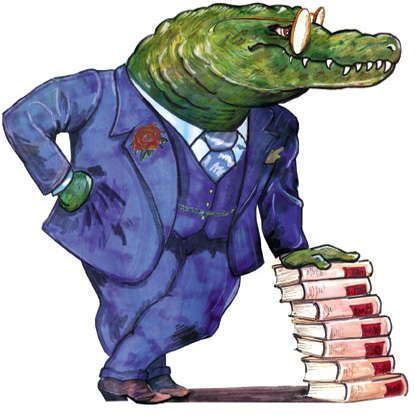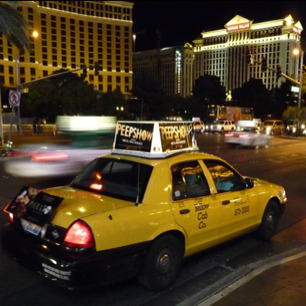My life in ATC began with 4 years Air Force then another 30 years with the Federal Aviation Admin. working tower & radar at some big international airports. I fought in the 1981 war with PATCO, survived the strike and kept a job that was just too exhilarating to walk away from. While there was nothing better than working airplanes, I did move on through several air traffic supervisory and management positions. It was a long, crazy career but I wouldn't trade a moment of it for love or lucre!
Hi Mike! Yes, it is quite common to bid a flight “Adieu” when it leaves a controller’s jurisdiction. Flight crews usually do the same; whether entering or leaving a particular controller’s world. It’s a way of injecting a bit of calm into the cold, clinical chaos of air traffic control.
Err, have a nice day . . . ?
Factor
Thanks for writing. I worked with a guy everyone called “Jimbo” but I don’t know why. His first name was Harrison.
Your question is a good one. As you probably know; all communications with air traffic control are recorded on the ground. These recordings are an indispensible source of information during accident/incident investigations. Cockpit conversations between crew members are not currently recorded on the ground. They are recorded on the aircraft’s so-called ‘black box’ but, as I recall, only on a continuous 30 minute loop. Who knows? With the advent of digital recording; the duration of these recordings may have changed somewhat.
The ability to examine the last thirty minutes of cockpit dialogue can be extremely helpful in reconstructing the circumstances leading up to an accident or incident. However, I hesitate to say it would be a good idea to remotely record all cockpit conversation from a flight’s start to finish. As with most other workplaces; conversations may take place that could be embarrassing or worse if heard by unintended ears. Imagine what fun the news media would have with a conversation between the Captain and First Officer about their love life – even if it took place six or seven hours before the accident/incident. People start judging. In my opinion; there is already too little privacy left in this world. Private conversations, as the song goes, “Ain’t nobody’s business.”
Cheers,
Factor
Will answer soon.
Hi Mathew! Having retired from the profession, I don't work at an air traffic facility anymore. I can tell you though; all air traffic facilities are awesome places to see. Some are impressive from an architectural standpoint, some for the cutting edge equipment the controllers use but all are amazing for the high level of responsibility their staff takes on when they’re controlling traffic.
Another amazing but rarely seen or acknowledged group of professionals are the ones who maintain the myriad of equipment that controllers and pilots rely on. They install and maintain the radio, radar and telecommunications gear that makes air traffic control possible. Gotta love ‘em!
Thanks for writing!
Factor
Certified Nurse Aide
 Is it true that STD rates in nursing homes are going through the roof?
Is it true that STD rates in nursing homes are going through the roof?
Personal Injury Lawyer
 What's the most frivolous case you’ve handled?
What's the most frivolous case you’ve handled?
Las Vegas Cab Driver
 Do people ever ask you to keep your meter off in exchange for a cheaper fare?
Do people ever ask you to keep your meter off in exchange for a cheaper fare?
All I can say for certain at this time is that it’s unwise for anyone to postulate or prognosticate about what happened or why. Yet that is the only kind of narrative we’ve been receiving up till now. No surprise. Whenever such things happen; the news media drags out the same writers and “talking heads” that blathered on about the last tragedy and all those before. Each of them amply compensated and hoping to be proven correct at some point, which could enhance their credibility and careers. Tripe. About the only thing I haven’t read or heard yet is the possibility of an alien intervention.
Once air traffic control loses visual, radio and radar contact with an aircraft; it is nearly impossible to determine what happened next and why until hard evidence is found. I can tell you one thing with absolute certainty though. Gravity eventually intervened and the plane returned to Earth; either in one piece or in fragments.
Factor
Now there’s an interesting question. When it came to clever quips and scorching sarcasm, most controllers I knew were quicker with their tongues than a rattlesnake. By necessity though, we stuck to our script most of the time – the ‘script’ being a voluminous FAA Order that specifies precise phraseology for every normal and most abnormal situations a controller might encounter. The main reason for this is to standardize the way controllers communicate, thus standardizing what pilots and other controllers expect to hear in a given situation. It’s about safety. Standardized communication even helps compensate for hard to understand accents – foreign or domestic. When you are familiar with the script, you are more likely to understand, even if the person speaking is not fluent in your language or dialect. But there are exceptional moments.
Controllers can be like a jack-in-the-box. The crank turns, the music plays and everything sounds normal. At some point though, a situation occurs that triggers an irresistible urge to step out of the box – often at the cost of our better judgment. When this happens, the lid flies open and out pops anything from the very humorous to the wildly inappropriate. I should add that pilots are equally skilled at this. I’ll tell you though; if anything goes wrong enough that other parties, such as other FAA offices, lawyers or the NTSB, have to review the recordings (it’s all recorded); we end up looking extremely unprofessional – at best.
Thanks for the question!
Factor
Hijacking attempts or actual events are a matter of national security and require special handling, which will likely be different for each event. There is no standard formula. When you look back at the history of aircraft hijackings you will see many variations in how they were handled and how they turned out.
Cheers,
Factor
-OR-
 Login with Facebook
Login with Facebook (max 20 characters - letters, numbers, and underscores only. Note that your username is private, and you have the option to choose an alias when asking questions or hosting a Q&A.)
(A valid e-mail address is required. Your e-mail will not be shared with anyone.)
(min 5 characters)
By checking this box, you acknowledge that you have read and agree to Jobstr.com’s Terms and Privacy Policy.
-OR-
 Register with Facebook
Register with Facebook(Don't worry: you'll be able to choose an alias when asking questions or hosting a Q&A.)